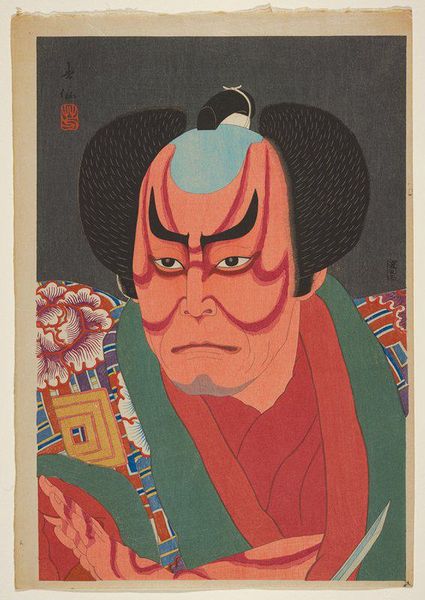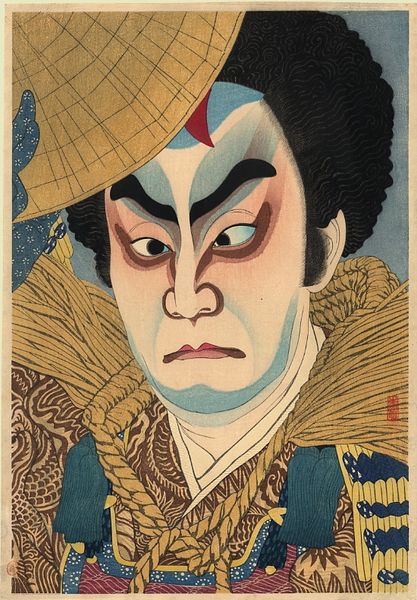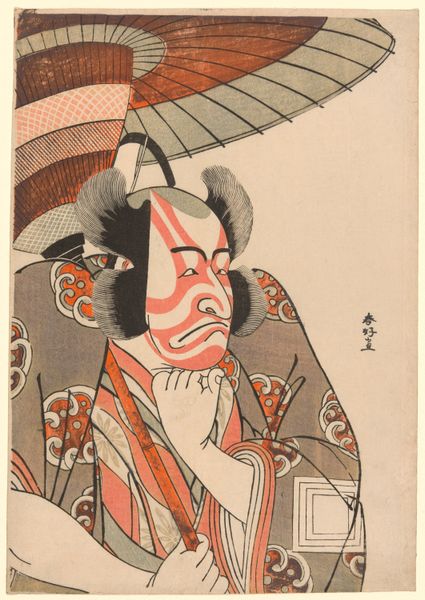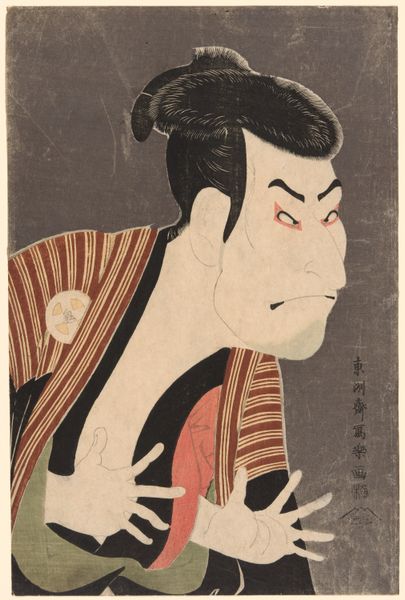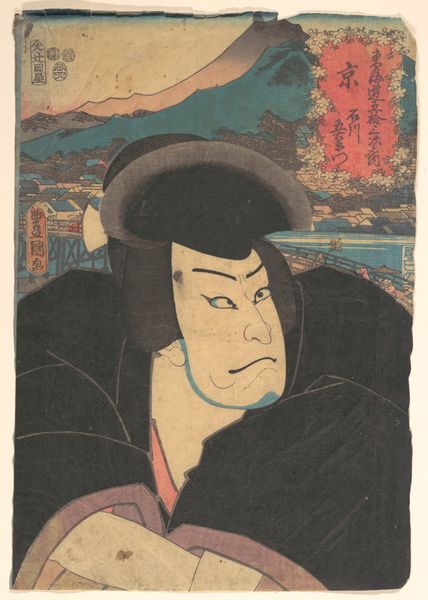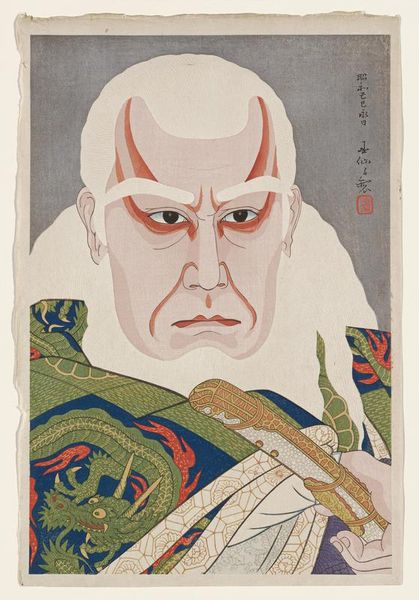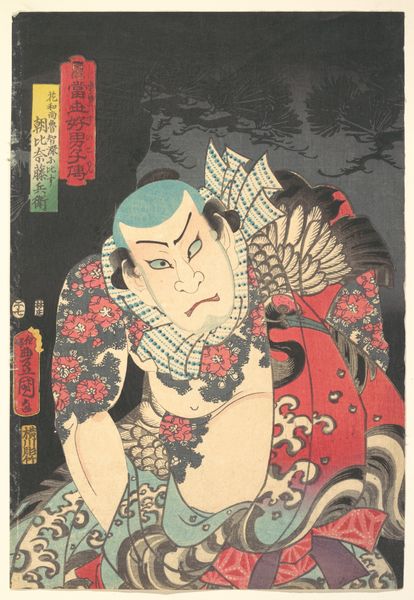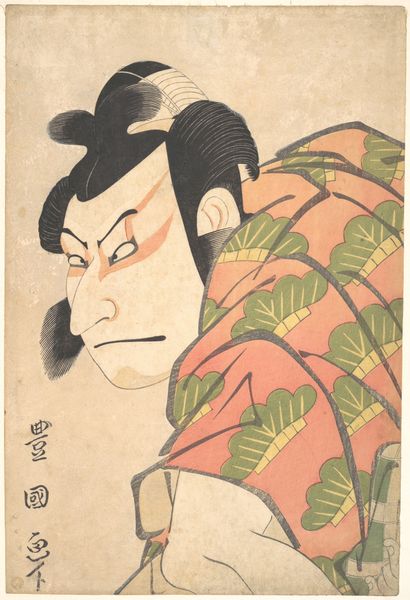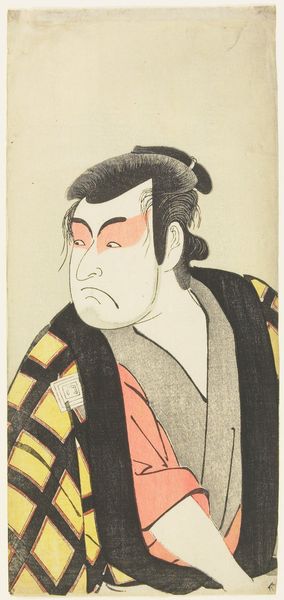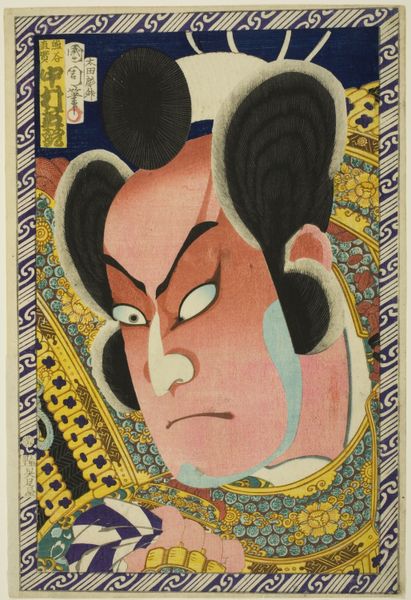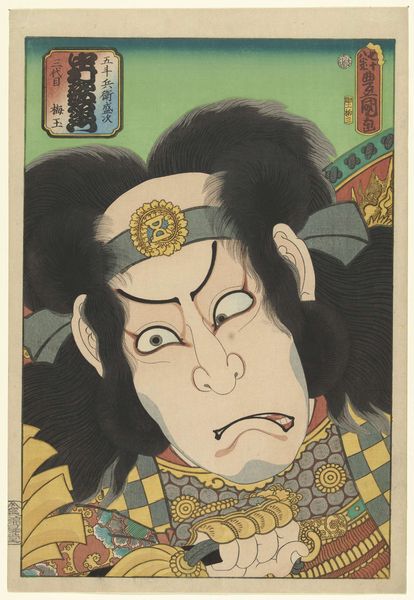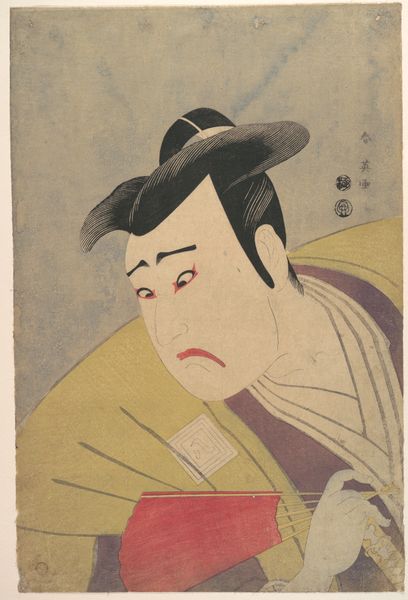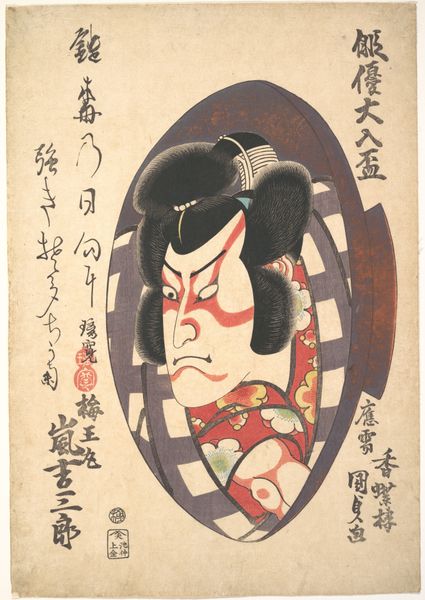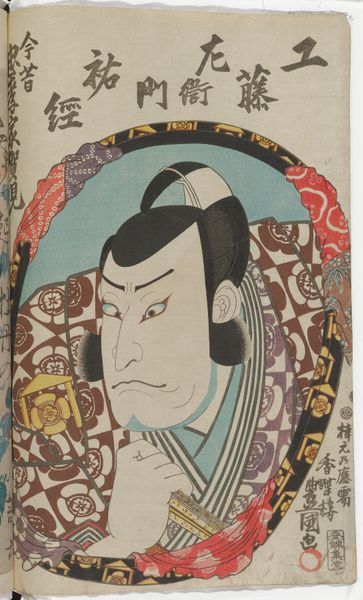
Copyright: Public domain Japan
Curator: Let's discuss Shunsen Natori's woodblock print from 1926, titled "Study of the actor Nakamura Kichiemon as Otokonosuke." Editor: The bold, graphic quality hits you immediately. The striking makeup and dark background create a very dramatic effect. The lines seem so purposefully placed. Curator: Absolutely. What's fascinating is the interplay between the meticulous carving and printing processes, and the subject matter itself. This is not just a portrait, but a study of performance and representation. Consider how the actor's persona is constructed through layers of makeup and costume – commodities available thanks to specialized craftspeople. Editor: Right, and the formal aspects reinforce that artifice. The strong lines of the makeup, the graphic quality of the kimono pattern – they’re all designed to project a certain image to an audience. It’s all surface, but deliberately so. Note how the severity of the expression contrasts with the almost cartoonish exaggeration of the makeup. Curator: Indeed, and we mustn’t ignore the historical context. Prints like these were popular commodities, mass-produced and consumed by a growing urban audience hungry for images of their favorite performers. The entire ukiyo-e tradition reflects a complex dance between artistic expression and market demand. Editor: Thinking about the actor's gaze, its almost unsettling in its intensity, isn’t it? The slight asymmetry adds a sense of unease, contrasting against the geometric precision elsewhere. It hints at the emotions masked by the makeup, and creates tension in the composition. Curator: And each individual print in the series would be subtly unique, a product of the woodblock carver's skill, the quality of the paper, and even the humidity on the day of printing, each of which contributing nuances and individuality within a mass-produced form. Editor: Exactly. Despite the constraints, there’s room for nuance in the expression, revealing a certain artistry on behalf of both the actor and the printmaker. The print really balances a compelling theatrical image with raw human presence. Curator: It's a potent example of how the social conditions of art making can impact the end product and our ability to understand it, something a formal reading alone can miss. Editor: And I, in turn, will consider a shift in emphasis, one accounting for social production as being, ultimately, one element among many formal components and design choices, and still requiring the viewer's subjective input.
Comments
No comments
Be the first to comment and join the conversation on the ultimate creative platform.
